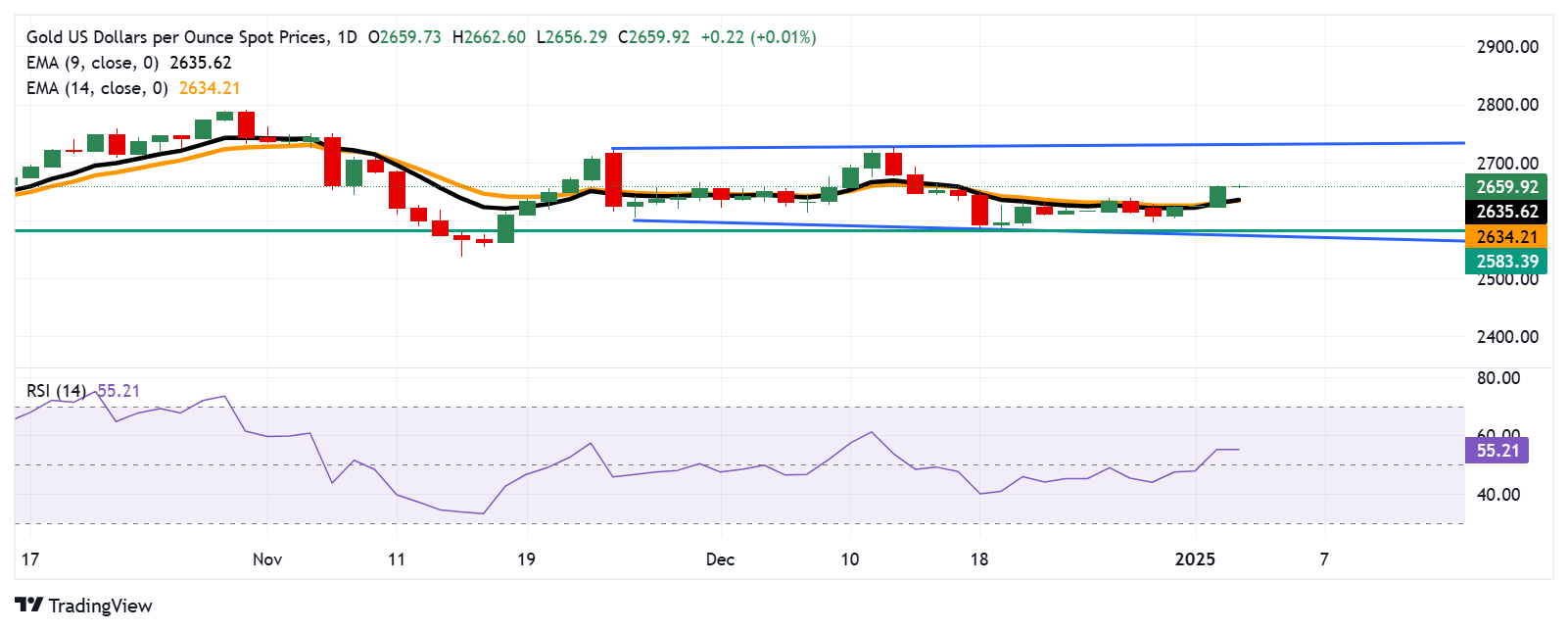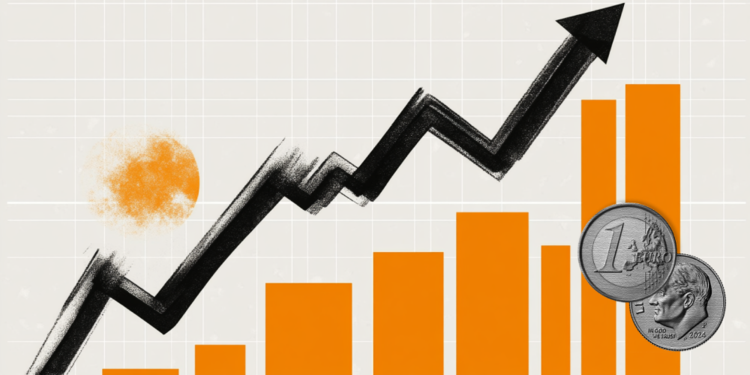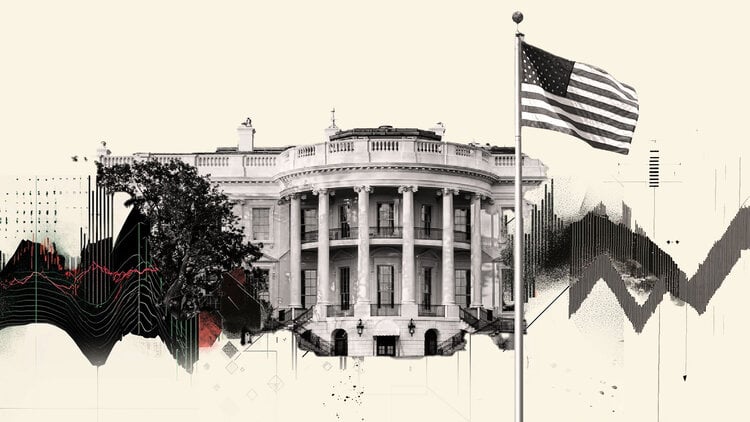- Gold price receives support from safe haven flows as Joe Biden discussed contingency plans to attack Iran’s nuclear facilities.
- Dollar-denominated Gold could struggle as the US Dollar Index trades around its multi-year high of 109.56, reached on Thursday.
- Non-yielding Gold could receive support as US Treasury yields remained low.
Gold (XAU/USD) prices rise for the fourth consecutive session on Friday, building on a stellar performance in 2024 with gains exceeding 27%, the metal’s best annual return since 2010. This sustained rally is attributed to strong demand safe haven amid persistent geopolitical tensions in the Middle East and the protracted conflict between Russia and Ukraine.
According to three sources cited by Axios, US President Joe Biden discussed contingency plans to attack Iran’s nuclear facilities if Tehran made significant progress toward developing a nuclear bomb before Donald’s inauguration. Trump on January 20. These discussions highlight growing concerns about Iran’s nuclear ambitions during the transition period between administrations.
Traders remain vigilant about a possible recovery in China’s economy and its impact on gold demand. In a New Year’s speech on Tuesday, President Xi Jinping pledged to prioritize economic growth, promising more proactive policies to boost China’s economy in 2025, according to Reuters.
Daily Market Summary: Gold Price Gains Support on Safe Haven Flows
- The US Dollar Index (DXY), which measures the performance of the US Dollar (USD) against six major currencies, rose to a new multi-year high of 109.56 on Thursday before retreating slightly to trade around 109.20 at the time of write. The strength of the Dollar could have limited the upside potential of dollar-denominated Gold, as a stronger USD makes Gold more expensive for buyers using other currencies.
- Gold, a non-yielding asset, may have found support as the 2-year and 10-year US Treasury yields remained low at 4.24% and 4.56%, respectively. Lower bond yields reduce the opportunity cost of holding gold, making it more attractive to investors.
- Non-yielding Gold could face challenges as the Federal Reserve (Fed) signals a more cautious stance on rate cuts by 2025, suggesting a shift towards tighter monetary policy. This hardline approach is shaped by uncertainties around the potential economic policies of the incoming Trump administration.
- Record purchases by central banks have reinforced demand for the yellow metal. A survey by the World Gold Council suggests that major central banks will likely increase gold purchases in 2025, further boosting demand for the precious metal.
- While China’s manufacturing activity showed minimal growth in December, the services and construction sectors have recovered. Data indicates that policy stimulus is beginning to impact certain sectors, as China braces for new trade risks from US President-elect Donald Trump’s proposed tariffs.
- Reuters cited that Russia launched a drone attack on Ukraine’s capital kyiv early on New Year’s Day on Wednesday, resulting in two deaths, at least six injuries and damage to buildings in two districts. Explosions echoed across the morning sky as Ukraine’s air force issued warnings of incoming drones.
- Meanwhile, the Israeli military kept up pressure on northern Gaza, carrying out strikes in a Gaza City suburb on Wednesday, according to medics. Airstrikes in Shejaia, a suburb of Gaza City, killed at least eight Palestinians. The Israeli military has not yet commented, and the identities of those killed in the attack remain unclear.
Gold price rises above the nine-day EMA, reinforcing a bullish scenario
The price of Gold is trading near $2,660.00 per troy ounce on Friday, with the daily chart signaling the emergence of a bullish bias. The price of the metal has risen above the nine-day and 14-day exponential moving averages (EMAs), indicating strengthening bullish momentum in the near term. Furthermore, the 14-day Relative Strength Index (RSI) has risen above the 50 level, further supporting the development of a bullish bias.
To the upside, the XAU/USD pair may explore the area around the psychological resistance of $2,700.00, followed by the next barrier at its monthly high of $2,726.34, reached on December 12.
The XAU/USD pair may test initial support around the nine-day and 14-day EMAs at $2,635.00 and $2,633.00, respectively. Additional support appears around its monthly low of $2,583.39, recorded on December 19.
XAU/USD: Daily Chart
Gold FAQs
Gold has played a fundamental role in human history, as it has been widely used as a store of value and medium of exchange. Today, apart from its brilliance and use for jewelry, the precious metal is considered a safe-haven asset, meaning it is considered a good investment in turbulent times. Gold is also considered a hedge against inflation and currency depreciation, since it does not depend on any specific issuer or government.
Central banks are the largest holders of Gold. In their aim to support their currencies in turbulent times, central banks tend to diversify their reserves and purchase Gold to improve the perception of strength of the economy and currency. High Gold reserves can be a source of confidence for the solvency of a country. Central banks added 1,136 tons of gold worth about $70 billion to their reserves in 2022, according to data from the World Gold Council. This is the largest annual purchase since records exist. Central banks in emerging economies such as China, India and Türkiye are rapidly increasing their gold reserves.
Gold has an inverse correlation with the US Dollar and US Treasuries, which are the main reserve and safe haven assets. When the Dollar depreciates, the price of Gold tends to rise, allowing investors and central banks to diversify their assets in turbulent times. Gold is also inversely correlated with risk assets. A rally in the stock market tends to weaken the price of Gold, while sell-offs in riskier markets tend to favor the precious metal.
The price of Gold can move due to a wide range of factors. Geopolitical instability or fear of a deep recession can cause the price of Gold to rise rapidly due to its status as a safe haven asset. As a non-yielding asset, the price of Gold tends to rise when interest rates fall, while rising money prices tend to weigh down the yellow metal. Still, most of the moves depend on how the US Dollar (USD) performs, as the asset is traded in dollars (XAU/USD). A strong Dollar tends to keep the price of Gold in check, while a weaker Dollar is likely to push up Gold prices.
Source: Fx Street
I am Joshua Winder, a senior-level journalist and editor at World Stock Market. I specialize in covering news related to the stock market and economic trends. With more than 8 years of experience in this field, I have become an expert in financial reporting.








